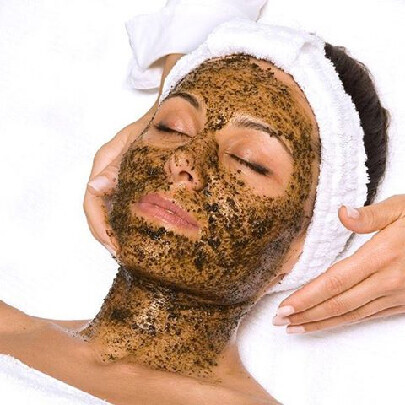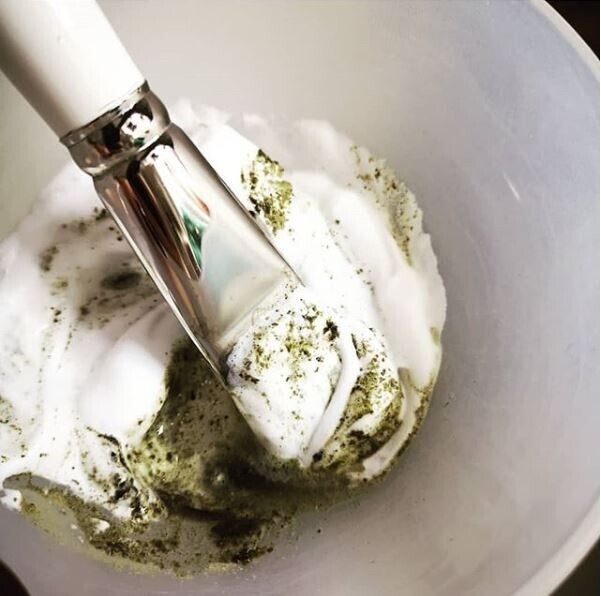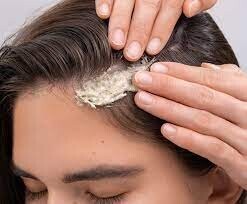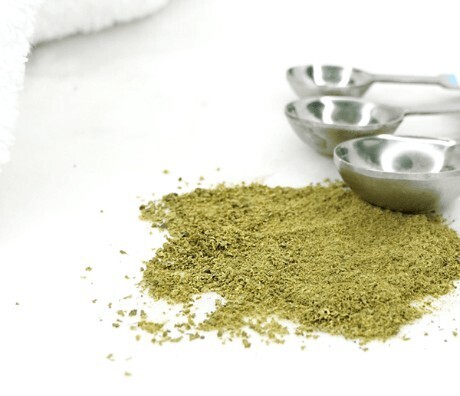- How it works
- What is involved with the Herbal Peel?
- Treatment for Hair Loss & Thinning
- What is the herbal mixture made of?
- Pre-treatment instructions
- Contraindications
- Post-treatment instructions
- Where else can you use the Herbal Peel?
- How does the Herbal Peel help with resurfacing?
Immerse yourself in the world of herbs. The Herbal Peeling Treatment which helps people with various skin problems to get a clean and even skin. Eight selected herbs containing enzymes, minerals and vitamins are the basis of three natural problem solving treatments. Varying amounts of the herbal plant mixtures allows the treatments to be adapted to individual skin conditions and the personal treatment goals. The Herbal Peel 3 treatment methods include options with and without peeling effect.
Available in 3 strengths:
- Level ILight treatment, without peeling effect, functions as effective prevention helper against premature skin aging & loss of elasticity, ideal problem solver for tired-looking skin. No downtime and minimal flaking is expected.
- Level IIMedium treatment, without peeling effect, leads to natural improvement of the skin and reduces age-related skin appearance; suitable for skin problems such as impurities, pale skin, scars and pigmentation disorders. Some flaking and dryness is to be expected.
- Level IIIStrong treatment, with peeling effect, to stimulate the skin renewal, for numerous of skin problems such as seborrheic skin, impure skin, scars, sun-damaged skin, stretch marks and much more
Benefits of the peel include:
- Purely natural, without acids or chemical additives
- Sustainable solution for many skin problems
- Improves large-pores
- Clears acne
- Removes deep scars
- Reverses premature aging
- Removes sun damage
- Improves hyperpigmentation
- Stretch marks reduction
- Sagging skin
- Smooths lines and texture
- Tightens and firms facial contours and loose eyelids
- Step 1: Skin PrepDuring the skin analysis and consultation the appropriate level of Herbal Peel that is best aligned with your skin concerns will be selected (Level I, Level II, or Level III).. Topical anesthetic may be suggested depending on protocol selected. Before starting the Herbal Peel, the skin is cleansed and toned.
- Step 2: Herbal Peel Facial ApplicationOnce the skin is cleansed and prepared, the Herbal Peel is applied generously. The Herbal Peel is massaged into the skin for up to 10 minutes. Microparticles in the herbal mixture remove the top layer of the skin to stimulate cell renewal and collagen production. This can feel like rough sand exfoliating the skin.
- Step 3: Compress and MoisturizeAfter the 10 minute massage is completed, any remaining Herbal Peels mixture is applied to skin. An herb concentrate soaked compress is wrapped on the skin and left on for twenty minutes. This allows the Herbal Peel and concentrate and allow maximum absorption. After the 20 minutes, the compress and excess herbal mixture are removed. The Herbal Peel ends with applying toner, serum, moisturizer and SPF.
The well-known Herbal Peel herbs are used in combination with the specially developed Activating Scalp Massage to demonstrably help with hair loss and weak, thin hair. The special massage promotes blood circulation in the scalp. The proven herbs improve the metabolism, the oxygen and nutrient supply, stimulate the hair follicles, have a regenerating effect, strengthen the hair and make the hair feel soft and smooth. Ideal treatment results are achieved with 3 treatments at intervals of 4 weeks and the Hair Boost Tonic as a specially formulated home care product.
This method can be performed with:
- Receding hairline
- Diffusely distributed hair loss & localised hair loss
- Thinning hair at upper back of head
- Hormonal and genetically determined hair loss
- Weak and thinning hair
The Herbal Peel mixture consists of powdered leaves, flowers, sprouts and roots from selected plants. Six plants play a unique role in the herbal mixture. These are Horsetail, Aloe Vera, Ribwort, Lungwort, Pansy and Marigold.
Some of the herbs have been used as a medicinal plant since the middle ages. For others, their special benefits can only be obtained in combination with other plants. This Herbal Peel represents the sum plant knowledge and decades of experience in this field.
Details of the most important herbs
- HorsetailHorsetail is considered as an extremely unruly weed in your garden – which is probably the reason why it was disregarded for a long time. But horsetail is actually an old medicinal plant. The branched plant reduces inflammation, while it also provides a strengthening and protecting effect. Horsetail contains a lot of silicic acid. It improves the skin’s structure, releases blockages as well as it strengthens and enhances the elasticity of the connective tissues.
- Aloe VeraIts cooling, anti-inflammatory and healing effects often makes Aloe Vera to a popular ingredient in after-sun products. But Aloe Vera has a lot more properties, which makes it so valuable to the Herbal Peel mixture. Aloe Vera contains a variety of enzymes, vitamins, oligosaccharides and amino acids. It is soothing and moisturizing.
- RibwortThe plant with the wide, strong leaves is also called plantain or buckhorn. It contains a lot of silicic acid, tannins and minerals. Ribwort boosts the regeneration of damaged cells and accelerates cell growth. The herb contains a secondary plant substance called aucubin, which has an antibacterial effect and reduces irritations. That’s why it is also considered an old home remedy for insect bites.
- LungwortThe small plant with the delicate blossoms is full of surprises. In popular medicine, it was used to treat pulmonary diseases and for external wound healing. Lungwort is rich in silicic acid, tannins and minerals. It supports cell regeneration, causes calluses to peel and has astringent properties. These abilities are what make the plant so important for the Herbal Peel.
- PansyIn the past Pansies were known as the “herbs for girls with blemished skin”. Pansies contain carotenoids and salicylic acid derivatives and help with impure, inflamed skin conditions. Wild pansy is a traditional medicinal plant and is recommended for many skin diseases. The calming effect is derived from its grass-like leaves. They facilitate wound healing, relieve itching and have an antibacterial effect.
- MarigoldThe plant with the bright yellow-orange coloured blossoms is an old medicinal plant, which has proven as effective, especially in healing wounds. Its blossoms can be found in salves, tinctures and infusions. Marigold does not only help wounds to close, but also can reduce inflammations quickly and has an antibacterial effect. In addition, it activates cell division.
- Hydrate: for seven days prior, moisturize your skin in the morning & evening.
- Be gentle on your skin. As you prepare for a chemical peel, you will need to refrain from waxing your skin or using chemical depilatory (hair removal) treatments for at least 7 days before treatment.
- Stop all topical acids (like glycolic, alpha, or beta hydroxyl acids), retinol, Retin-A, or other like products 7 days prior to treatment.
- Refrain from any other chemical peels. In the two weeks leading up to a chemical peel, it is imperative that you refrain from having any other chemical peel treatments. If it has been less than two weeks since your last chemical peel, you should wait until at least 14 days have passed.
- Avoid microdermabrasion treatments. Microdermabrasion treatments work similar to chemical peels, except this treatment uses a gentle abrasive tool to peel off the outer layer of skin. If you are planning on having a chemical peel performed, you should avoid having a microdermabrasion treatment for at least 14 days before the procedure.
- Avoid tanning beds or prolonged exposure to the sun 14 days prior to treatment. Always use a zinc oxide sunscreen with SPF 30+.
- Avoid self-tanning topical products for two weeks before your chemical peel
- Avoid cosmetic treatments within two weeks of your peel such as neurotoxins, fillers, resurfacing treatments, lasers.
- Take antiviral medication as needed. Some people preparing for a chemical peel will not need to take antiviral medication. However, if you have a history of herpes infections on or around your mouth, your doctor may prescribe an antiviral medication for you to take before and after the treatment.
- Pregnancy or nursing
- Hydroquinone use in the past 3 months on treatment area
- Allergies to any of the components of the formulation
- Treatment with topical or oral prescription strength acne medication in the past 6 months
- A history of diseases stimulated, such as recurrent Herpes Simplex in the treatment area or active facial or oral herpes infection
- History of drugs with photosensitizing potential
- Facial cancers, especially facial melanoma
- Any active condition in the treatment area, such as sores, psoriasis, eczema and rash as well as excessively/freshly tanned skin
- History of skin disorders such as keloid scarring, abnormal wound healing, as well as very dry and fragile skin
- Any medical condition that might impair skin healing
- Any surgical, invasive, ablative procedure in the treatment area in the last 3 months or before complete healing
- Cosmetic treatments including neurotoxins, filler, threads, Sculptra will need to be evaluated for healing and possible contraindications. Skin must be healed before treatment.
- Use of Isotretinoin (Accutane®) within 12 months prior to treatment due to the increased risk of scaring (to be reviewed in consultation)
- Currently taking antibiotics
- Any surgical procedure in the treatment area within the last three months or before complete healing
- Treating over tattoo or permanent makeup
- Excessively tanned skin from sun, tanning beds or tanning creams and sprays within the last two weeks
- Uncooperative patient (patient is careless about sun exposure or application of post care)
- Patient with unrealistic expectations
What to Expect Post Herbal Peel Level I & II:
Minimal downtime is expected for level I and II. Immediately after skin may feel a light prickling sensation when touched. Some light dryness and flaking may occur as skin cell turnover is expedited.
What to Expect Post Herbal Peel Level III:
Before you leave a follow up appointment should be scheduled for 5 days after the peel application.
- Day 1: Day of treatment, skin is flushed, may have some mild swelling, feel prickly to the touch, warm, sensitive to heat and have sunburn like sensation.
- Day 2: Skin is tight, smooth and some prickling sensations may still be present.
- Day 3-4: Your skin will start to peel and some itchiness is expected. Follow-up facial will be done to help cleanse, remove peeling skin and reveal new skin.
Herbal Peel Level III – Post Care Daily Routine Day 1-5
Avoid any water during the 5 days. This may dilute the penetration and effectiveness of the peel. It’s also essential that post care is used regularly for optimal results.
- Step 1: Gently wipe or press gauze soaked in Herbal Care Lotion.
- Step 2: Apply 4 drops of the ampule to treated skin.
- Step 3: Moisturize with the Herbal Peel Special Regulating Cream.
- Step 4: Apply SPF of 30 or higher 15 minutes before sun exposure and reapply often or as needed. Reapply post care steps a minimum of twice a day in the AM & PM (no SPF required).
After day 5 you may resume, the post care listed below.
Post Care Skin Routine Level I,II & III (After Day 5)
- Wash skin with the Gentle Cream Cleanser with cool water. Avoid using towels or abrasive scrubbing cleansing cloths. Pat dry once rinsed with cool water.
- Tone skin with the Calming Flower Mist.
- Apply post care safe serums after toning options include: Herbal Peel ampule, Phyto Calm Aloe Drops, EGF Drops, Antistress CBD, HA Revive Hydrator Dops or Daily Hydration Drops.For excessive itching or redness the Remedy Gel is recommended.
- Moisturize with the Herbal Peel Special Regulating Cream, Phyto Calm Hydrator or Vita E Moisturizing Cream.For additional moisturizing, apply a thin coat of Barrier Balm over areas where skin may have excessive dryness, irritation. A small (rice grain) amount of Barrier Balm may mixed in with post care moisturizer as well for an overall boost in moisturizing.
- Apply SPF of 30 or higher 15 minutes before sun exposure and reapply often or as needed.
Additional Post Care Advisories:
- Avoid rigorous exercise with sweating while skin is peeling
- Avoid saunas/use jacuzzi or sweating until the skin is healed.
- Avoid direct UV exposure (sunbathing and tanning) for at least 4 weeks after your peel. Something to consider if you have holidays planned. Stay out of direct sunlight until the skin is completely healed. Apply SPF religiously, you don’t want to do more damage.
- Avoid the use of abrasive or exfoliation sponges and scrubs.
- Do not pick or pull at your shedding skin, this can lead to pigmentation. It is recommended that the skin be left to shed on its own. To remove large pieces of hanging skin you may opt to use a clean, small cuticle scissor to trim the exfoliating skin.
- Do not use any other ingredients on skin treatment area while doing the post care
- Do not book any cosmetic treatments for at least 2 weeks post-treatment or until after skin has stopped shedding.
- Keep your face moisturized with post care and reach out to your practitioner if you are concerned about any adverse effects.
- Remedy Gel can be used to minimize redness or itching.
- Dark spots can appear darker during the peeling process. Inform the office if you have any persistent redness or brown discoloration or irritation.
- Do not use any additional Retin-A while completing the Herbal Peel treatment protocol.
- Do not have laser hair removal in the treated area for at least one month (14 days) after peel/peel follow up visit.
- Do not wax or pluck the treated area for two weeks (14 days) after peel.
- You may start wearing make up once your skin has healed.
- Products are for topical use only not for ingestion.
- Store products in cool dry place. Close lids tightly to avoid product drying out or oxidizing prematurely.
- Expected downtime can vary depending on treatment settings
- During the healing process keeping the items in contact with treatment areas clean. This may include: clean pillow cases, linens, wiping down cell phones or any accessories coming in contact with treated skin.
- Contact the office if you have any concerns about how your skin is responding to treatment or is healing.
The Herbal Peel is formulated to be applied on face and body. Protocols may be modified to treat face and body areas for various skin conditions.
This treatment may also be used on the scalp to help with hair loss and weak thin hair. Schedule a consultation to find out if the Herbal Peel is recommended for you.
The Herbal Peel can significantly improve the appearance and health of the skin by effectively removing the layers of aged and damaged skin from the face or other parts of the body. After these dead skin cells are shed, the skin rejuvenates itself by replacing healthier new cells. This process promotes skin resurfacing and generates tighter, fresh, and youthful skin.




